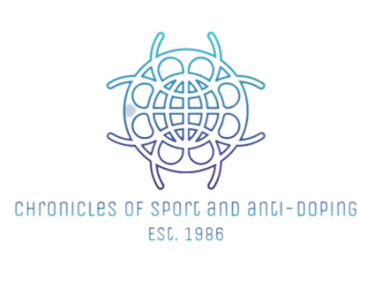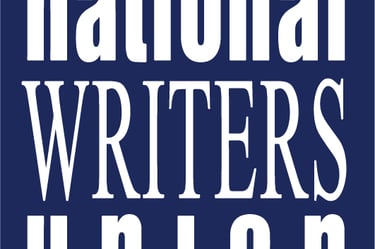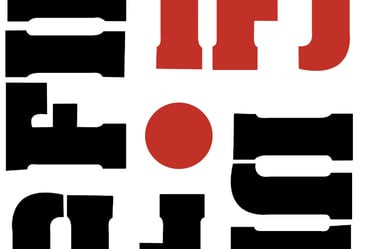An Investigation into Premier League Players Testing Positive for Banned Substances


The Investigation and its Findings
The investigation, which spanned over a period of six months, sought to uncover the truth behind rumors circulating within the football community regarding the use of performance-enhancing drugs. The findings have sent shockwaves through the sporting world, as fans and experts alike grapple with the implications of such widespread doping in one of the most prestigious football leagues in the world.
The Players and the Substances
The nine players in question, whose identities have been kept confidential due to ongoing legal proceedings, were found to have tested positive for a range of banned substances, including anabolic steroids, growth hormones, and stimulants. The substances detected in their systems were not only indicative of a deliberate attempt to enhance their performance but also posed significant risks to their overall health and well-being.
The Shortcomings of Anti-Doping Measures
While the investigation has shed light on the presence of doping in the Premier League, it has also exposed the shortcomings of the current anti-doping measures in place. The fact that these players managed to evade detection and sanctions raises serious concerns about the efficacy of the testing protocols and the ability of governing bodies to enforce strict anti-doping regulations.
The Integrity of the Sport and Fair Competition
Furthermore, this investigation has raised questions about the integrity of the sport and the fairness of competition within the Premier League. The use of banned substances not only provides players with an unfair advantage over their opponents but also undermines the principles of fair play and sportsmanship that lie at the heart of football.
The Need for a Comprehensive Review
In light of these revelations, there is an urgent need for a comprehensive review of the anti-doping measures within the Premier League. This should include a reassessment of the testing protocols, the introduction of more stringent penalties for offenders, and increased education and awareness programs to deter players from engaging in doping practices.
The Importance of Collaboration
Moreover, the investigation has also highlighted the need for greater collaboration between football authorities, national anti-doping agencies, and law enforcement agencies to tackle the issue of doping more effectively. The fight against doping requires a coordinated and multi-faceted approach that involves not only testing but also intelligence gathering, investigation, and prosecution of offenders.
Restoring Trust and Integrity
As the football world grapples with the shocking revelations brought forth by this investigation, it is crucial that swift and decisive action is taken to restore trust and integrity in the sport. The Premier League, as one of the most watched and celebrated football leagues globally, must lead the way in eradicating doping and ensuring a level playing field for all players.
The Lack of Comprehensive Testing in Football
One of the main reasons why doping in football has managed to fly under the radar is the lack of comprehensive testing. Unlike other sports, such as cycling and athletics, where athletes are subjected to rigorous and frequent drug tests, football has been relatively lenient in its approach. This is partly due to the logistical challenges of testing such a large number of players across different leagues and countries. Additionally, there has been a lack of consensus among football authorities on the severity of the issue and the need for stringent testing protocols.
The Reluctance to Address the Issue
Another contributing factor to the hidden truth about doping in football is the reluctance of clubs and players to address the issue. Football is a highly competitive sport, and the pressure to perform at the highest level is immense. In such an environment, some players may resort to doping as a means to gain an edge over their opponents. However, the culture of silence and denial within the football community has made it difficult to expose and address the problem. Clubs are often hesitant to acknowledge any wrongdoing within their ranks, fearing the repercussions it may have on their reputation and financial stability.
The Financial Implications
Furthermore, the financial implications of doping in football cannot be ignored. The sport generates billions of dollars in revenue each year, and the success of clubs and players is closely tied to their commercial value. Any scandal involving doping can have a significant impact on sponsorships, endorsements, and overall public perception. As a result, there is a vested interest among stakeholders to sweep the issue under the rug and maintain the illusion of a clean and fair game.
The Role of Club Doctors
However, the truth about doping in football is slowly starting to emerge. Recent investigations and revelations have shed light on the extent of the problem, with several high-profile players and clubs being implicated. The World Anti-Doping Agency (WADA) has also taken steps to address the issue, working closely with football authorities to implement stricter testing protocols and sanctions.
The Complicity of Club Doctors
The role of club doctors in doping is a matter of great concern and has raised questions about the integrity of the profession as a whole. While it is important to acknowledge that not all club doctors are involved in doping practices, the involvement of some medical professionals in covering up positive test results and providing players with banned substances is deeply troubling.
The Betrayal of Trust
Club doctors are entrusted with the responsibility of ensuring the well-being of the players. They play a crucial role in conducting regular medical examinations, prescribing medications, and advising on injury prevention and rehabilitation. Their expertise and knowledge are essential in maintaining the health and fitness of the players, which directly impacts the success of the team.
The Compromised Welfare of Players
However, the investigation has revealed instances where club doctors have abused their position and compromised the welfare of the players. By covering up positive test results and providing players with banned substances, these doctors have not only betrayed the trust placed in them but have also endangered the health and safety of the athletes.
The Violation of Fair Play
The complicity of club doctors in allowing players to escape sanctions is a grave violation of the principles of fair play and sportsmanship. It undermines the integrity of the sport and creates an unfair advantage for those who are willing to cheat. Moreover, it sends a disturbing message to young athletes who look up to these professionals as role models.
Stricter Regulations and Accountability
To address this issue, stricter regulations and oversight are needed. It is imperative that governing bodies and sports organizations take decisive action to ensure that club doctors adhere to the highest ethical standards and prioritize the well-being of the players above all else. This can be achieved through regular monitoring, independent audits, and mandatory education programs for medical professionals working in sports.
Consequences and Deterrence
Furthermore, it is crucial for club doctors to be held accountable for their actions. If found guilty of participating in doping practices, they should face severe consequences, including loss of their medical license and potential legal repercussions. This will serve as a deterrent and send a clear message that such behavior will not be tolerated.
The Importance of Education
Additionally, education and awareness programs should be implemented to educate players, coaches, and support staff about the dangers and consequences of doping. Many athletes may be unaware of the long-term health risks associated with doping or may feel pressured to use performance-enhancing substances in order to keep up with their competitors.
Collaboration and Research
Moreover, there should be increased collaboration and sharing of information between sports federations and anti-doping agencies. This will help to identify trends and patterns in doping practices across different sports and allow for a more coordinated and effective approach in combating doping.
Investing in Detection Methods
It is also crucial to invest in research and development of new detection methods for performance-enhancing substances. As technology advances, so do the methods used by athletes to cheat the system. By staying ahead of the curve and constantly improving testing methods, anti-doping agencies can ensure that they are able to detect and deter new forms of doping.
A Call for Stricter Anti-Doping Measures
In conclusion, the findings of this investigation highlight the urgent need for stricter anti-doping measures in football. By increasing the frequency and intensity of testing, implementing harsher penalties, ensuring transparency and accountability, providing education and awareness programs, promoting collaboration, and investing in research and development, the sport can take a proactive stance against doping and protect the integrity and fairness of the game.




